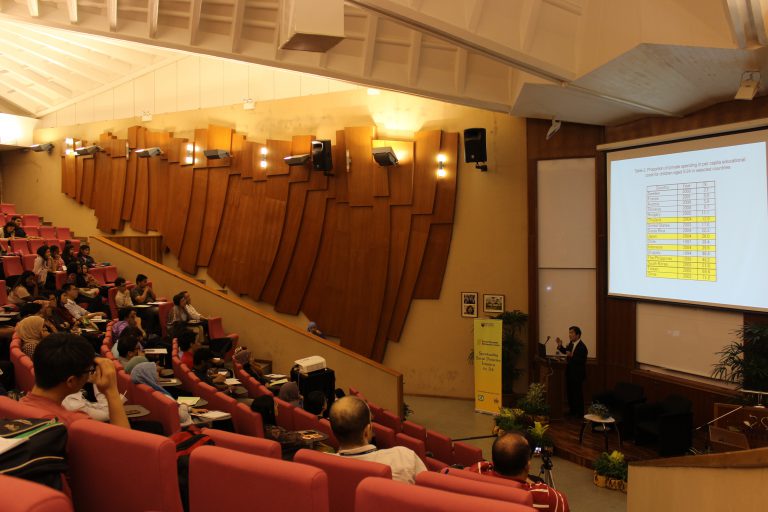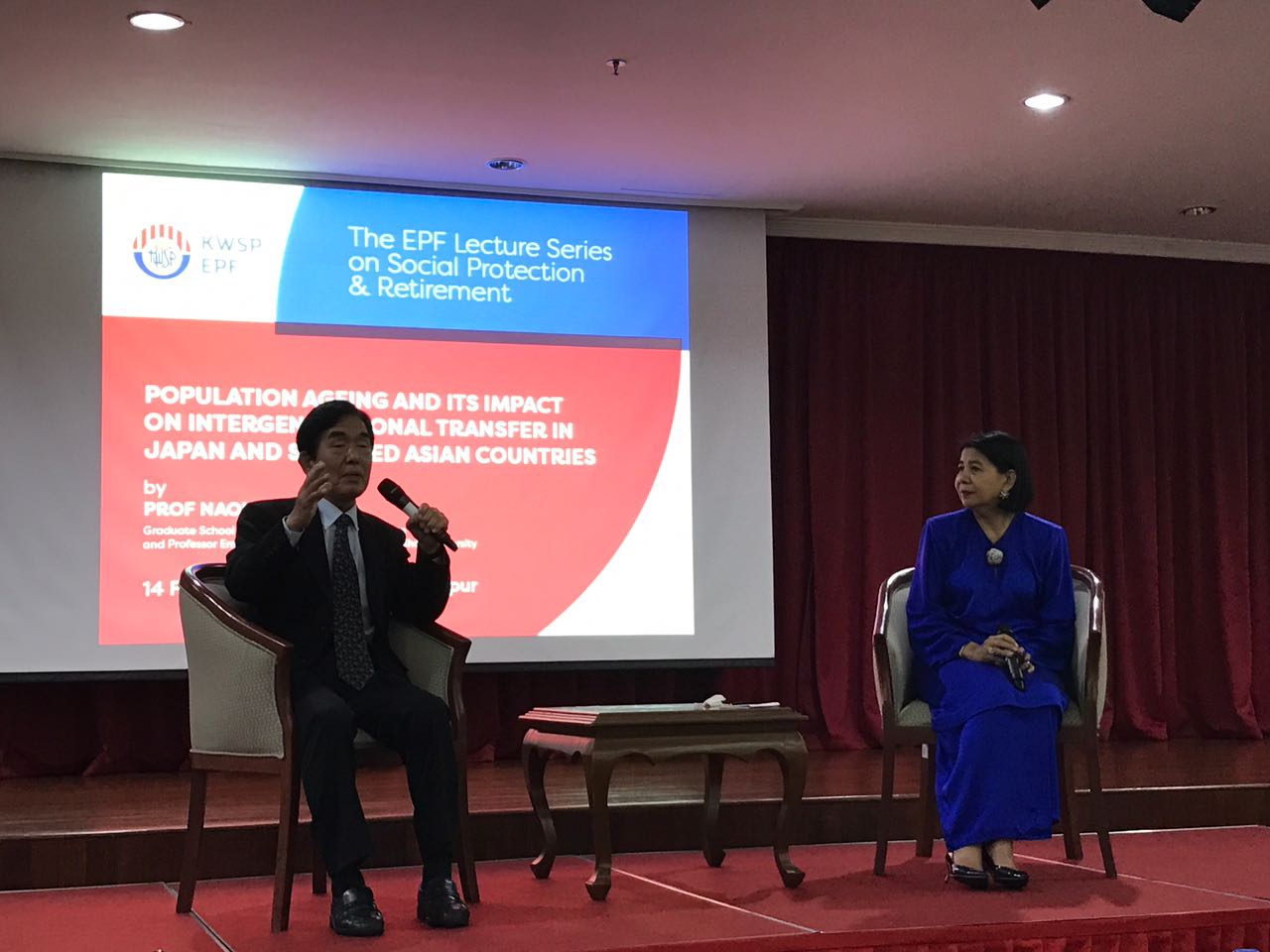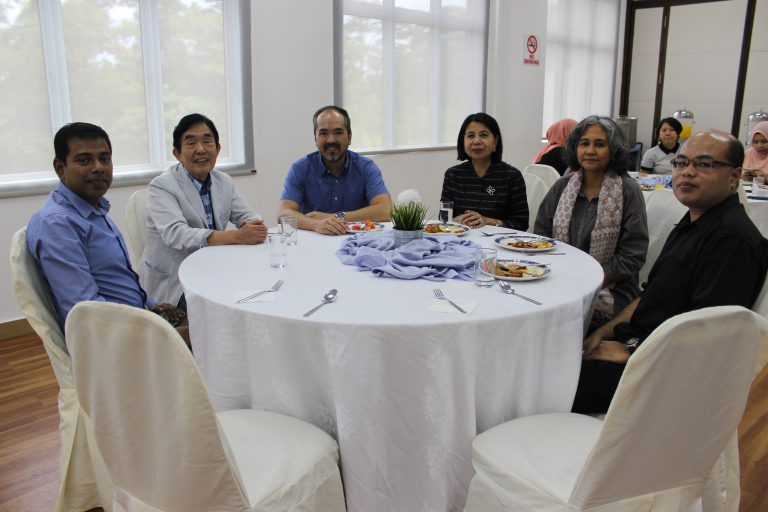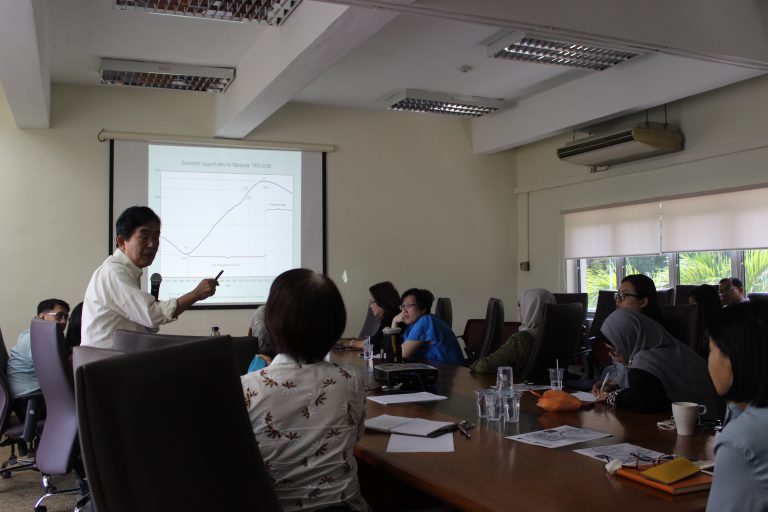13/2/17 ~ Lecture to Master Students
Topic : Rapid Population Ageing, Changing Intergenerational Transfers and Increasing Demand for Lifecycle Wealth in Japan

Professor Ogawa presented on the changing pattern of private and public interegenerational transfers and compared it with other, selected Asian countries, while drawing on the methodology of the National Transfers Accounts (NTA). He also addressed the issue of the emergence of the first demographic dividend, which arises due to age compositional shifts.
14/02/17 ~ The EPF Lecture Series on Social Protection & Retirement
Topic: Population Ageing and Its Impacts on Intergenerational Transfers in Japan and Selected Asian Countries

In his lecture at EPF, Professor Ogawa highlighted on NTA indices for Japan in the period 1984-2009, focused on the three components of age allocations (public transfers, private transfers and assets), with emphasis on the economic status of the Japanese elderly. He pointed out that the elderly in Japan can be very useful in eliciting policy responses that could alleviate the economic problems brought about by rapid population aging, and that, for the elderly to fully realize their potential in that regard, financial education is very important.
15/02/17 ~ Luncheon with FEA and EPF members

17/02/17 ~ SSRC SEMINAR: The Impact of Rapid Population Ageing upon Economic Growth, Labour Supply, and Intergenerational Transfers in Japan and Selected Asian Countries

In his lecture to FEA members, Professor Ogawa compared the computational results for Japan regarding the impact of population aging on public and private intergenerational transfers and the generation of the first and second demographic dividends, to the similar results for selected Asian countries. The lecture also touched on the issue of untapped work capacity of the elderly and their potential to contribute to the so called “Silver Dividend”.